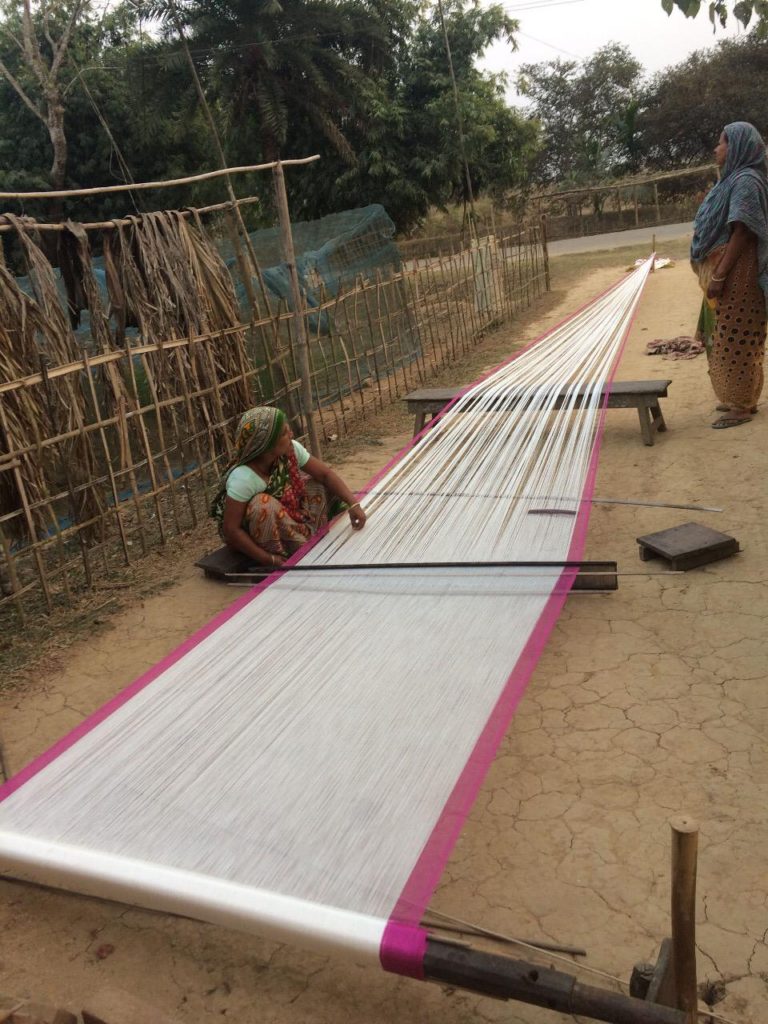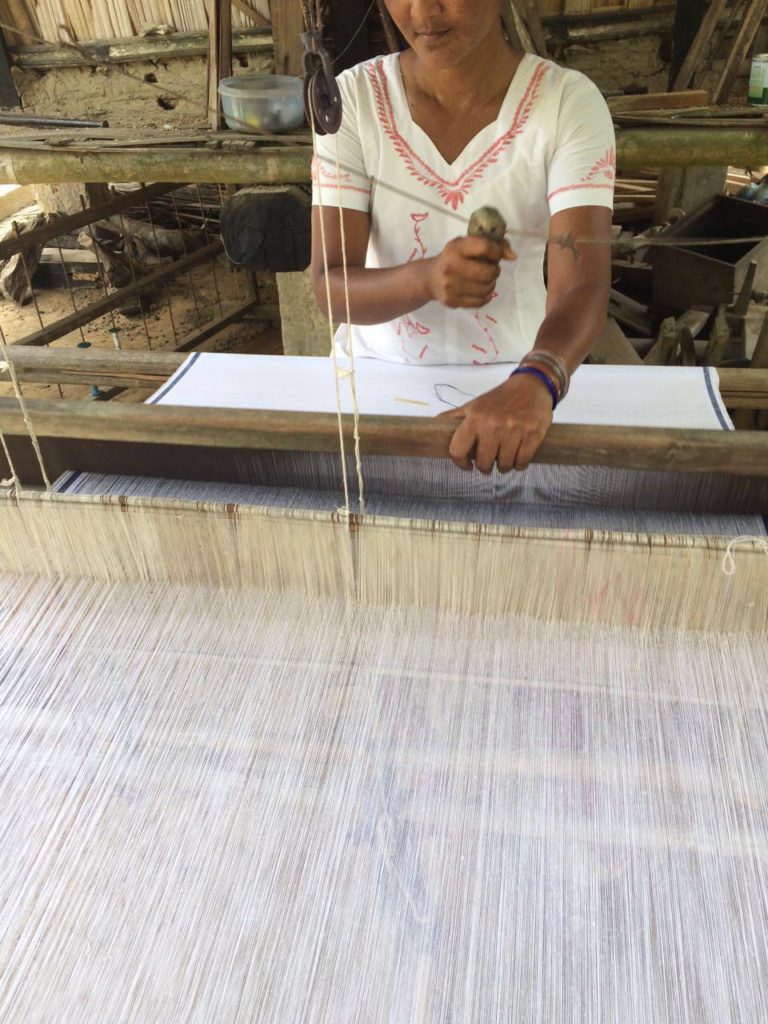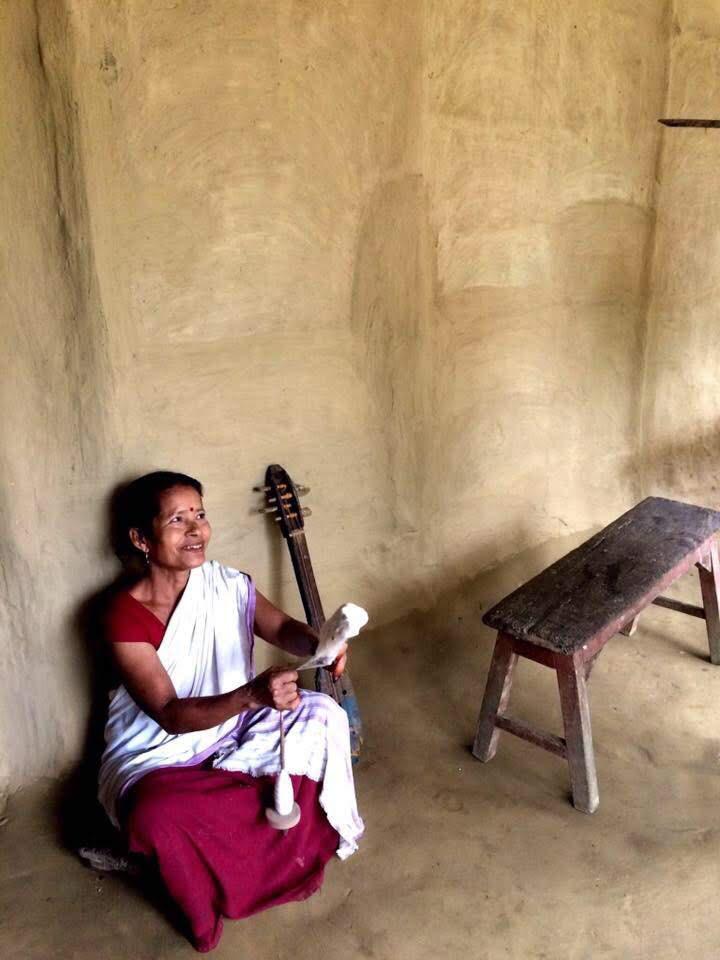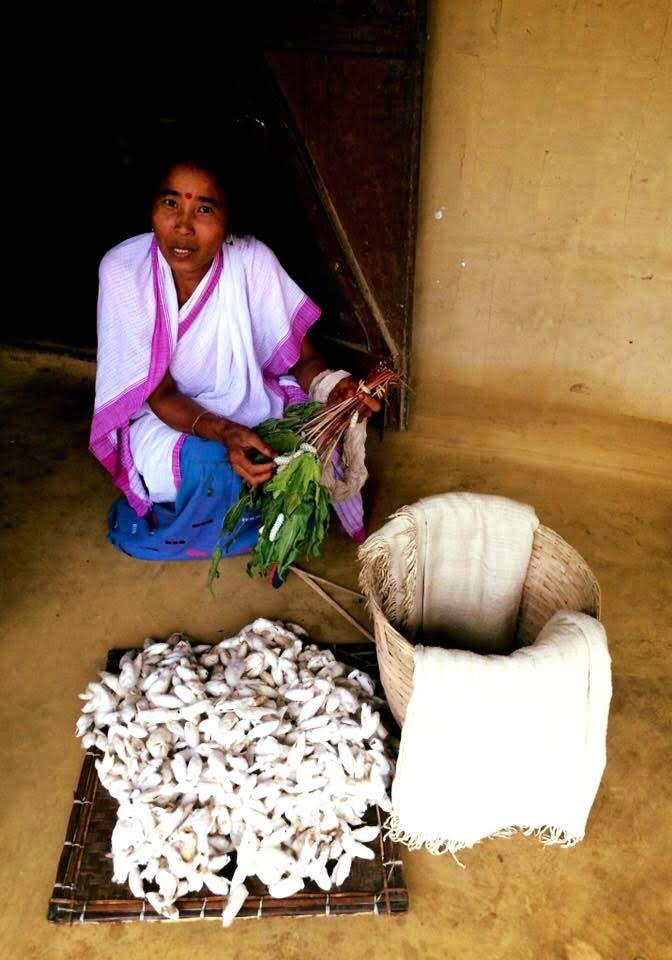
Not many cultures can boast of preserving the art and heritage of rich textiles for over 2000 years. A story goes that travelling monks who visited North East India taught people, who were starved of clothes due to unavailability of cotton crops in the region, to revere its silk practices. It made the poor rich in a way that resonates with many who understand the concept of slow fashion and sustainability.
Amidst this hustle of life a slow revolution has been emerging quietly. A kind of revolution that is causing a paradigm shift in life choices and consciousness. Simply put, slowing down means becoming aware of our choices. This pandemic has brought some of its mysteries out in the open causing us to weigh our ways of life. Slow fashion is a part of this quiet revolution.
It is true that the planet has suffered greatly due to textile waste and its pollutants but Fashion is also a tremendous tool to make change happen. This change can happen relatively quickly because it is the only industry where change is designed and predicted. It has the power to redefine fundamental ideas of consumerism and create massive movements for the collective – simply with ideas of change.
Slow fashion is a concept that is inherent to the people of this country. India was the largest exporter of textiles in the world before the Industrial Revolution. As such, it is believed that over 40% of its population was engaged in textile related activities which diminished to merely 10% by 1947. With the destruction of this manufacturing activity, the balance between agricultural and non-agricultural livelihoods collapsed.
With the economy in shambles, around 1.5 million weavers/allied workers either succumbed to starvation or were forced to move into agriculture. Truth is we have still not been able to obtain stability in the farming sector due to cultural limitations and lack of infrastructure such as cold storage facilities and un-insured markets. The sharp increase in population after independence, combined with decreasing plot sizes has caused rural distress. This has resulted in thousands of farmers committing suicide.
Slow fashion offers a solution here by systematically re-infusing values of traditional industries into the supply chain all the way to the consumers, while building a sustainable economic system and simultaneously creating awareness. If so much as 30% of our farmers move into producing non-perishable produce such as natural fibres and sericulture (or for that matter forestry, fishery, animal husbandry and poultry farming), we will have created an alternate and a robust sustainable ecosystem for the agriculture sector – without necessarily resulting in unplanned urbanisation and migration of rural population to urban locations in search of work.
Reconnecting with our roots will help us usher in this new era of consumerism. The silk and handloom practices that are prevalent in North East India are inspiring many leaders to come together and create value in the rural economy. If we are familiar with terms like ‘Fashion Capital’ and ‘Financial Capital’, without a doubt we should proudly call Northeast India the ‘Organic Capital’ of the country.
Simplicity, minimalism, sustainability are intrinsic qualities of the people of Northeast India. Significant data shows that Assam accounts for almost 43% of the rural weaver households present in the country today, followed by West Bengal and Manipur and so on. It shows that Assam has been able to preserve the art of weaving better than any other state. However, as an industry, we should be concerned when prices of raw material surge, and desperation creeps in among weavers.

Historically, over several millennia, our weavers had developed 136 different varieties of weaves and techniques using minimum tools and immeasurable intelligence. It took 1000 years to create something which can be regarded as pride of humanity and an example of one of the highest forms of innovation created by human hands. But unfortunately, about 67 of these weaves are on the verge of extinction in a span of just 50 years. According to the latest census, 66.3% of weavers earn less than Rs.5000 a month, barely 23.3 % have bank accounts, only 3.3% are insured and even less are aware of such insurance policies. These figures show why the next generation of weavers are moving away from this art rapidly.
Additionally, as an entrepreneur who returned to her roots in Assam to work mostly with women in the rural sector, let me share four examples to highlight some of the other main challenges rural entrepreneurs face:
1) One of the major obstacles is access to funding. There are schemes that one may avail, but they don’t come without challenges. In my own experience with MUDRA Shishu loans (as well as those of many women entrepreneurs), women have rarely benefitted from them, although these were meant to be primarily for first-time entrepreneurs. Better facilitation and more sensitive monitoring mechanisms must be instituted to eliminate any unforeseen biases and prejudices based on gender/race/religion.
2) There are not enough innovative alternatives to lengthy generalised skill development and training programs in the rural sector .
3) There are few smart buyers-seller meeting platforms that can help bridge the gap.
4) It would be a tremendous support to initiate a campaign that invites top entrepreneurial stalwarts from across the country to volunteer as mentors specifically for women entrepreneurs in the rural sector.

But please note that these mentors should be such that they don’t need to see smart pitch decks, extensive business plans or detailed project reports to know if there is a prospect. They need to help discover the potential, show empathy, motivate and guide such entrepreneurs to success.
Now, when the country needs more job creators, than job seekers, as significant placeholders in the collective population, women’s role is of the essence here. This role takes on a new significance at a time when India has seen sharp and consistent declines in women’s work participation rates over three decades. This is the case even more now, in post-pandemic times, as joblessness has shot up in both rural and urban areas, among men and women; and this situation is unlikely to improve for some years to come.
This is also a time to bring about a fundamental change in the approach to women entrepreneurs. Much effort has been made to reach and develop rural entrepreneurship. The intention is truly appreciated, but it wouldn’t be inaccurate to say that the translation of these efforts fall short of desirable results and are hardly sustainable.
Nevertheless, any shortcomings or lapses are also opportunities for reflection and change. If we pay attention, these lapses can show us a way forward because they are widely symptomatic of a musty and stale approach to half of society.

The choices we make as part of the collective make a difference. Slowing down is one simple choice we can make today. Unprecedented changes have the power to create something new that can render the old obsolete. It begins with nourishing a brand new mind-set that could shape our future dynamically and bring meaning to humanity that remains to be imagined by us so far.

About the author: Priyanka Kaushik, Founder, Noi Mohi
After working in IMG for many years, I became capable of running a Fashion Week backwards wearing heels and I say this with some immodesty, only to point out that I got what I needed from the job and that new and more meaningful ambitions in life came to light after years of exploration, falling and learning.
The steps I have taken in my entrepreneurial journey, are almost as though cast by fate. Each of those steps has been laid down by people that I have met and the ideas that arose as a result of shared human experiences, pains and joys alike.
When I visited a local textile museum in Assam, my introduction to Eri Silk paved the way for the rest of my new journey I had embarked upon. The uncanny resonance of the process of metamorphosis of the silkworm into a magnificent moth was in-fact the very process of my own self-discovery which eventually turned me into an ardent admirer of Eri Silk also known as Ahimsa Silk.
This gave birth to Noi Mohi, ‘Noi’ means River and ‘Mohi’ earth in Assamese, it is a clothing experience/brand that specialises in Eri Silk and is co-created with rural household handloom artisans of Northeast India and nature alike.
NOI MOHI works with rural household artisans of Assam and co-creates handloom products using Tat Xal (traditional looms), dyes and material found locally ensuring limited wastage of natural resources esp. water. Our innovative designs are ‘co-created’, a process we call ‘translation’, with artisans by understanding consumers’ needs, values, and emotions ensuring a positive life experience while educating consumers about the lives of the people who make their clothes. Visit our website at https://noimohi.com
Disclaimer: The views, thoughts, and opinions expressed in the content belong solely to the author, and not necessarily to the author’s employer, organisation, committee, or other related groups or individuals, including Marg Advisory Services.

Charudutta Panigrahi
20 Nov 2020Good article. Thought provoking and advising too. The writer has subtly differentiated between going slow and going slothful.
Roohi Mittal
25 Nov 2020An insightful read! Liked the idea of slow fashion and how it links very well with the current changes in consumerism and increased self sufficiency.
Aliva Dutta
24 Mar 2021It was a great article. I came to know about slow fashion for the first time from this article.